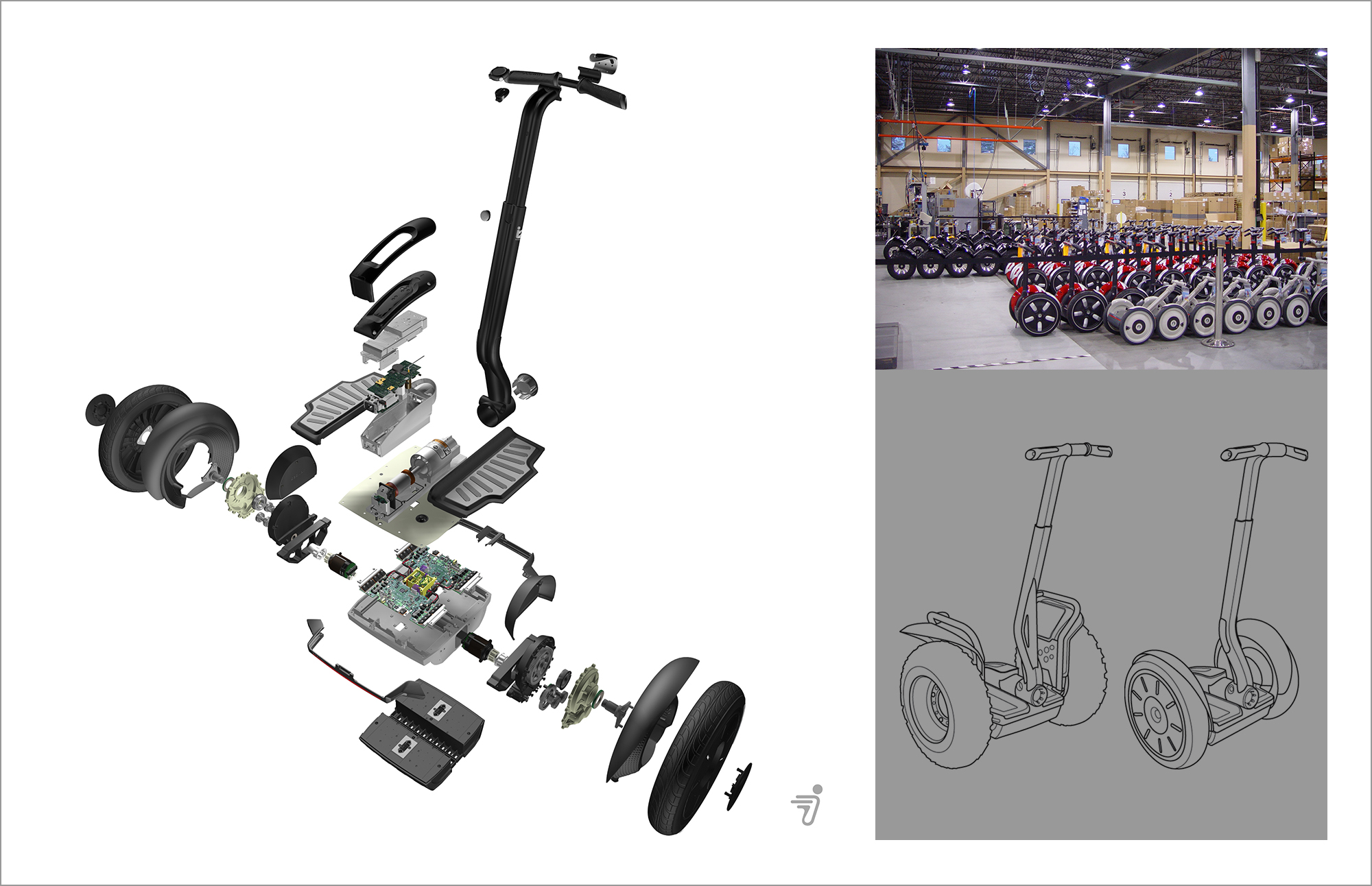1
2
3
4
5
6
7
8
9
10
11
12
13
14














Iconic self-balancing transport is seen at airports and tourist spots across the globe
Man max/ Machine min, the guiding design principle of Segway
I was fortunate to join Segway in the early days, working alongside Scott Waters. Together we crafted the look and feel of Segway as the world knows it today.
Modular architecture was designed to maximize the scalability of the platform. The chassis support multiple model configurations
Both off-road and urban models support a series of accessories options for additional carrying capacity and lighting.
The expression of dynamic motion was the inspiration for my handlebar design exploration.
I was a frequent visitor of the machine shop for rapid concept prototyping. “Fail faster, succeed sooner” is the motto.
Component-level design interactions with ergonomic and mechanical performance improvements.
Lean-steer control addressed many technical challenges on Gen1 model. The riding experience and safety are greatly improved.
A design attempt to allow forms to follow functions.
The great thing about working lean was getting to contribute a little bit toward everything. User’s manual, UI diagram, and safety labels.
Joyful to see Segway made it to pop culture in various forms
The intuitive ‘lean-steer’ architecture was inspired by my napkin sketch from a ‘Frog Kissing Day’, the proudest achievement I have on Segway.
I learned a great deal about the metal forming process from the experience designing a watertight AL unibody chassis.